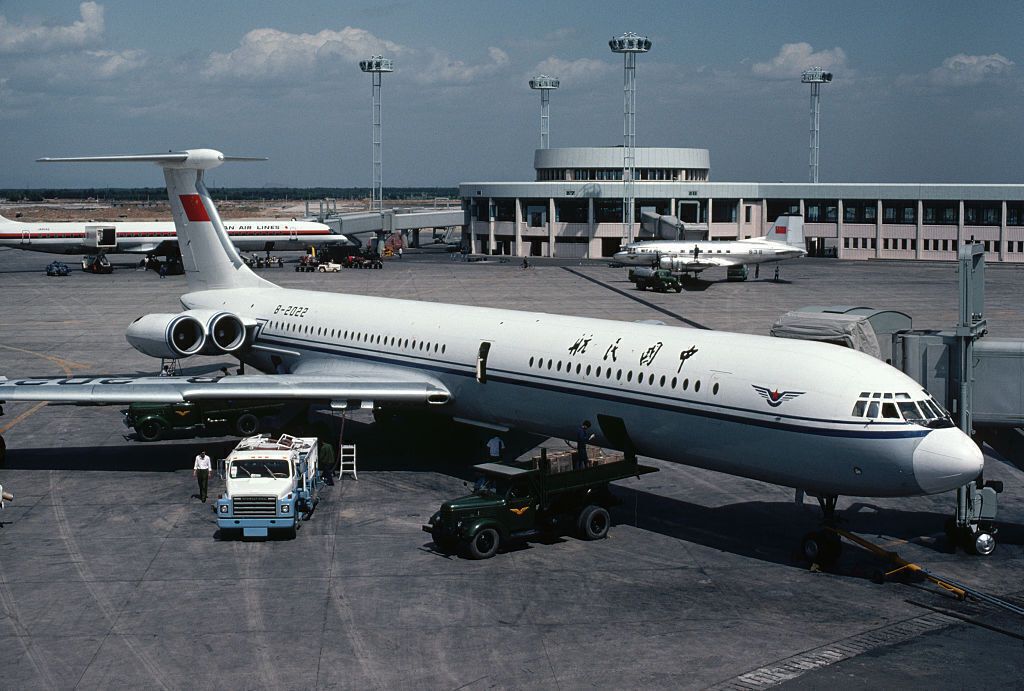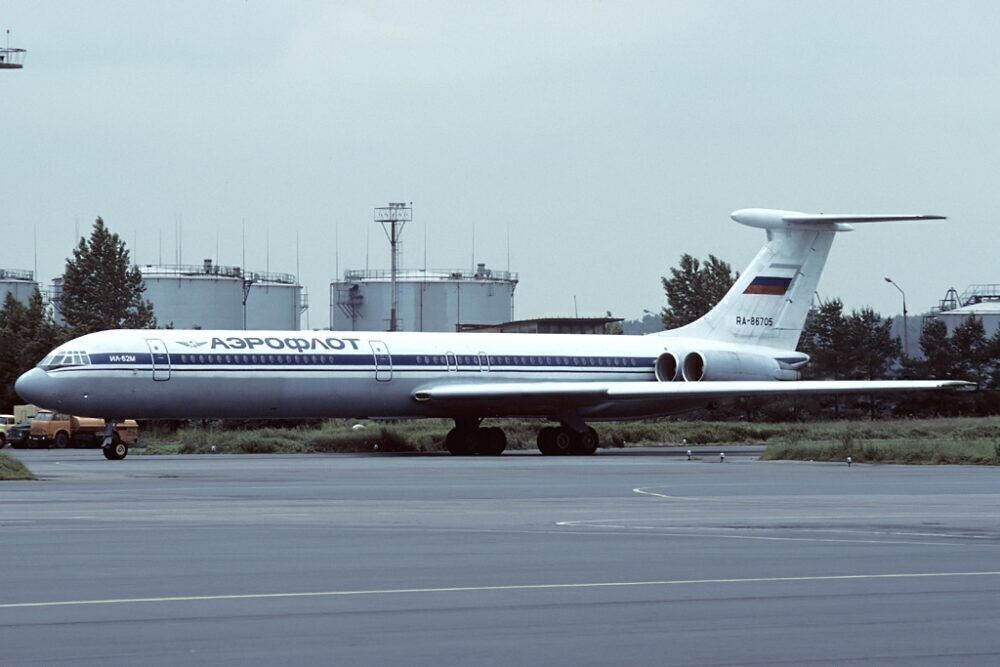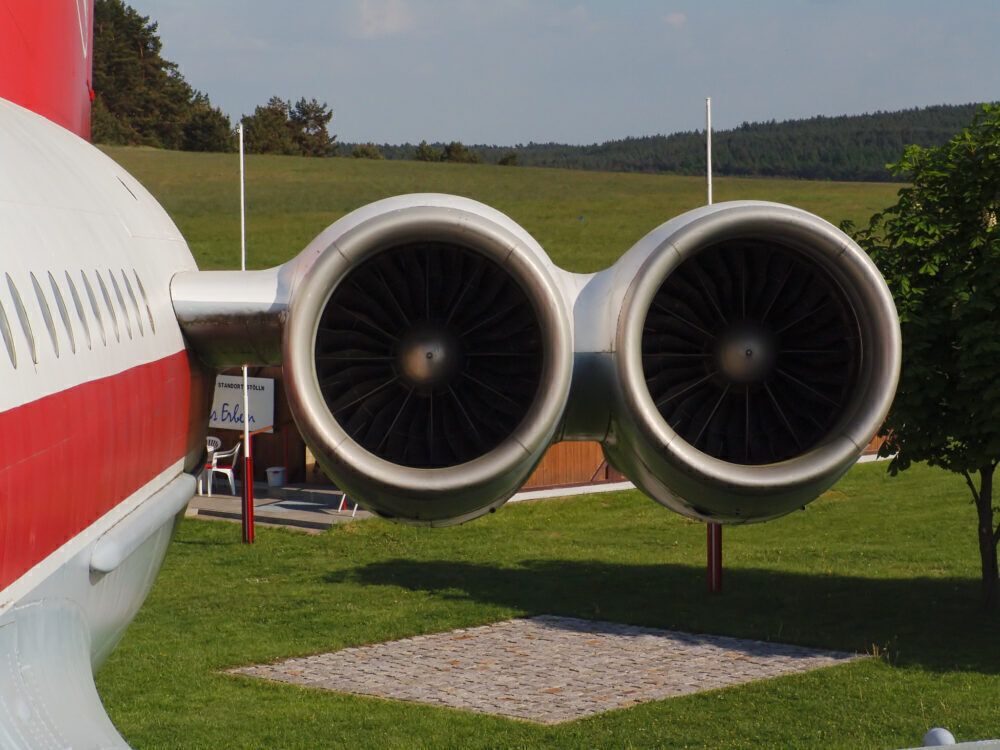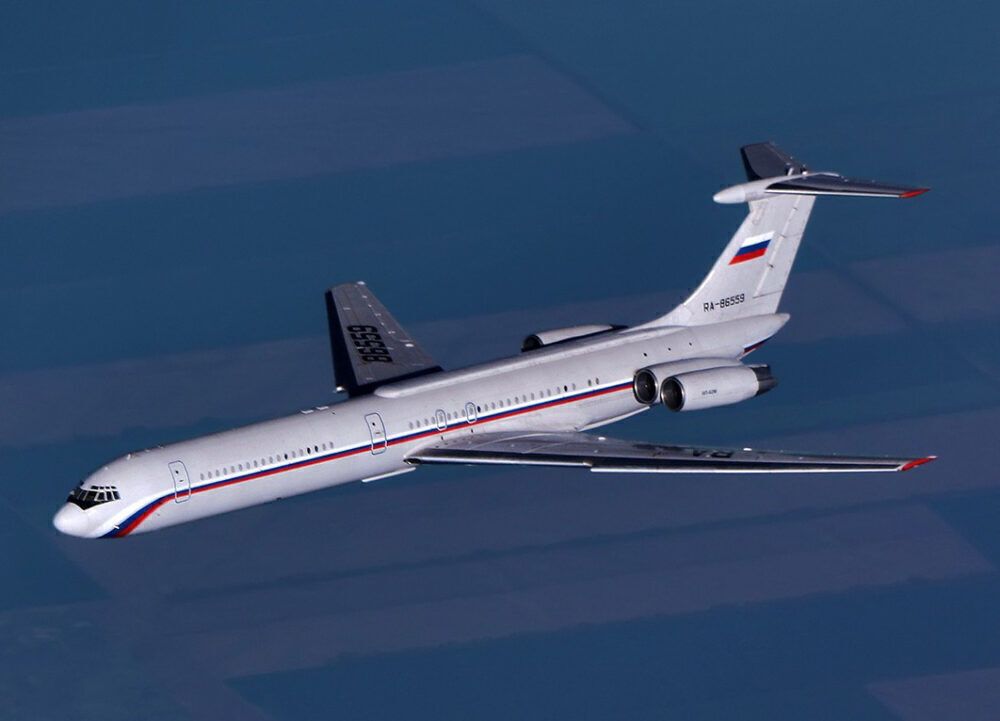An aircraft's size can often play a key role in forming and cementing its reputation and legacy. Indeed, you only have to look at the vast crowds that the Antonov An-225 draws to see that, for many people, the larger the aircraft means a greater spectacle. When the Ilyushin Il-62 was launched, it immediately nabbed the title of the world's largest aircraft at the time. Let's take a look at the history of this pioneering rear-engined aircraft.
Design and variants
Although the Il-62 first flew in January 1963, its story began just under three years previously, in February 1960. This was when Ilyushin first proposed the development of a four-engine long-range jetliner. It received government approval for this project two months later.
The plan for the Il-62 featured various requirements, including a range of 2,800 miles (4,500 km) when fully loaded with 165 passengers. Alternatively, a low-density, 100-seat version would have to be able to fly for 4,200 miles (6,700 km). It had Kuznetsov NK-8-4 engines, although Ilyushin swapped these for the quieter Soloviev D-30KU on the Il-62M.
Stay informed: Sign up for our daily and weekly aviation news digests.
Despite the excitement of being the world's largest jetliner at the time of its launch (53.12 meters in length), there was a gap of more than four and a half years between the Il-62's first flight and its commercial introduction. It eventually operated its first revenue-earning service from Moscow to Montréal for Aeroflot in September 1967.
Six and a half years later, in March 1974, the improved Il-62M variant entered commercial service. As well as the aforementioned quieter engines, this model (which outsold the original by 193 units to 94) also featured various aerodynamic improvements.
A rare engine configuration
The Il-62 was not unorthodox in having four turbofans. Indeed, this was a common feature on jetliners of the time, including the Boeing 707 and Douglas DC-8. It also entered service a few years before the Boeing 747, arguably the most famous quadjet of them all.
However, the configuration of the Il-62's engines conspicuously set it apart from most of its contemporaries. As seen above, the four turbofans were located at the rear of the aircraft's fuselage. They were mounted in pairs on either side in 'dual nacelle' housings.
The British-designed Vickers VC10 also had such a setup, with the similarities leading to allegations of industrial espionage. However, no evidence of the Il-62 copying that the VC10 was ever found. In any case, its 292 units comfortably outsold the 54 VC10s produced. The Lockheed Jetstar, which was a business jet of the era, also had such an engine layout.
The Il-62 today
In two years' time, the Il-62 will celebrate six decades since its first flight. It will have been in production for more than half of this period, with Ilyushin not ceasing to build further Il-62s until 1995, some 32 years after beginning. Owing to production ending as recently as the mid-1990s, a handful of Il-62M aircraft even remain in active service today.
According to data from ch-aviation.com, 10 of the aircraft were active at the time of writing in May 2021. Operators included Rada Airlines, North Korean national carrier Air Koryo, and the Russian Air Force's 223rd Flight Unit. Data from RadarBox.com showed that the military examples in particular were often taking to the air multiple times a week.
Have you ever seen or even flown on an Ilyushin Il-62? If so, how did you find that it compared to other pioneering jetliners of its time? Let us know your thoughts and experiences in the comments!




